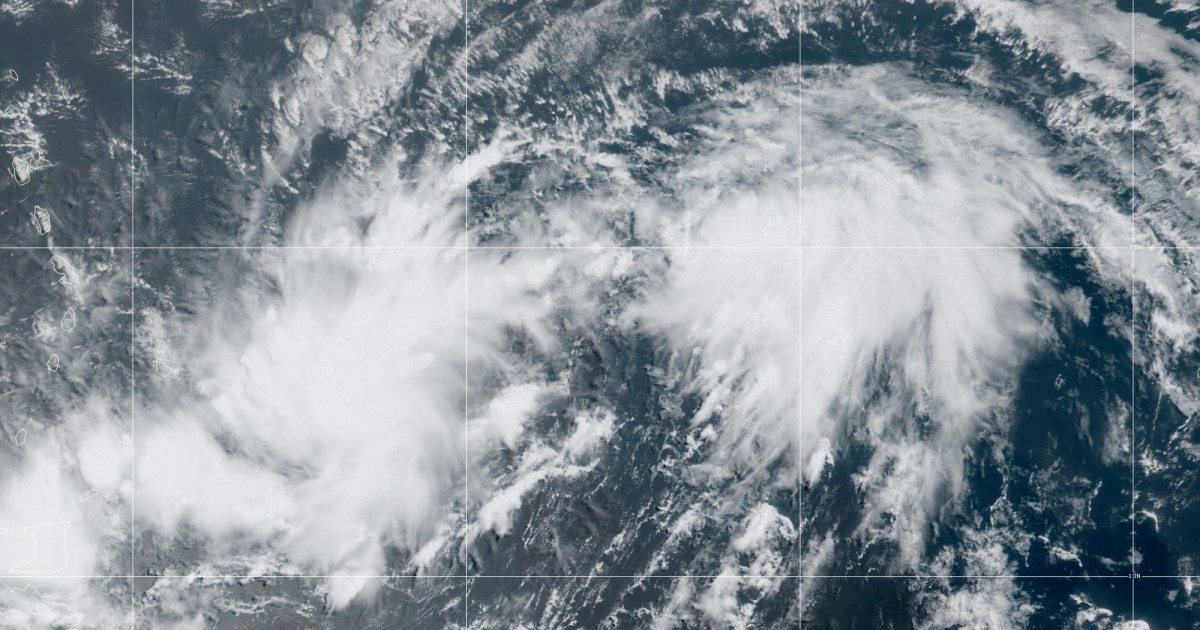
A new tropical disturbance is developing in the Atlantic Ocean and could pose a threat to Puerto Rico and Florida, the National Hurricane Center said Tuesday.
The hurricane center began issuing warnings about potential tropical cyclone nine, which was located about 585 miles east southeast of the Leeward Islands on Tuesday morning.
A potential tropical cyclone is a disturbance that is not yet a defined tropical cyclone, but has a high probability of formation. It allows the hurricane center to issue warnings for areas that could be affected before a depression or storm forms, allowing a longer wait time for places that could be in danger.
At 11 am, the disturbance had maximum sustained winds of 40 mph and the system was moving west at 23 mph. The disturbance is expected to become a tropical storm before reaching the Leeward Islands sometime Wednesday, so a tropical storm warning was put in place for Puerto Rico, the U.S. Virgin Islands, Antigua, Barbuda, the British Virgin Islands, St. Kitts and numerous other islands in the northeast Caribbean.
If it turns into a tropical storm, the next name on the list is Isaias. This would be the first storm “I ‘name that forms in the Atlantic on record, with the previous record being Irene from August 7, 2005. The average date of the ninth named storm in the Atlantic is October 4.
This will follow in the footsteps of five other tropical storms that have set the same record this year for their corresponding letters: Christopher, Edouard, Fay, Gonzalo and Hanna.
With Isaias looming, meteorologists are practicing how to pronounce it correctly. Pronounced “ees-ah-EE-ahs”, this four-syllable name emphasizes the third syllable. Isaias comes from the Spanish and Portuguese languages as a form of the biblical name Isaías, which means “God is my salvation”.
Tropical storm conditions are expected to hit the Leeward Islands on Wednesday and Puerto Rico on Wednesday afternoon through Thursday. Three to six inches of rain are expected with local amounts of up to 10 inches in the north of the Leeward Islands and two to four inches of rain in the windward islands. This amount of rain could lead to flash floods and landslides that are life threatening.
The exact heading and intensity of the storm remain uncertain, but it can track near the Turks and Caicos Islands and the Bahamas later this week, and could potentially turn northwest and approach Florida this weekend.
Meanwhile, Tropical Storm Douglas continues to drift away from Hawaii after an extremely close call with the island chain. When it was a hurricane, the circulation center did not make landfall on Oahu for just 30 miles with tropical storm force winds that roared just 10 miles from shore.
The hurricane center noted that this was the closest an Oahu hurricane had been since before Hurricane Dot in 1959.